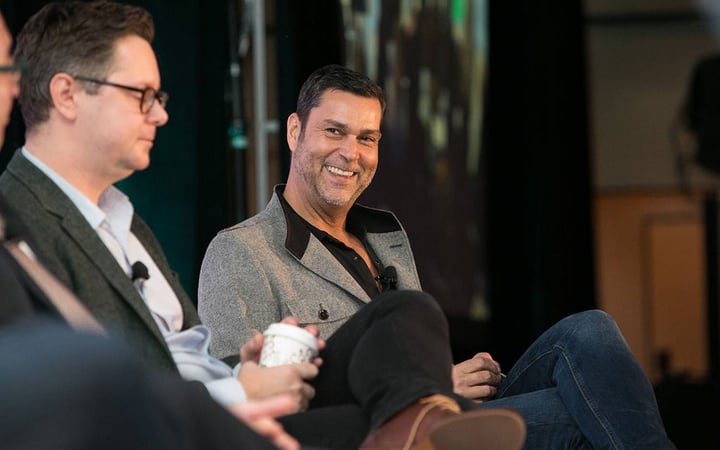The Mysterious World of AI Plagiarism: Where Intellectual Property Gets Lost in Translation
Artists Fight Back Against AI with Data-Poisoning Software and Legal ActionArtists combat AI with data-poisoning software and legal action.
Imagine a world where AI is not only creating art, but also stealing it. That’s right, folks, we’re talking about the perplexing issue of AI-generated plagiarism. As the boundaries of intellectual property blur, thanks to the rise of artificial intelligence, it has become increasingly difficult to decipher what constitutes plagiarism in this new digital landscape.
Picture this: AI-driven art platforms, like OpenAI’s DALL-E and Midjourney’s service, are running amok, using extensive data sets to train their algorithms without the artists’ explicit consent. These platforms have the audacity to monetize copyrighted material by offering subscription models that indirectly exploit the original works they were trained on. It’s like a heist straight out of an Ocean’s Eleven movie, but with ones and zeros.
Now, a pertinent question emerges: do these platforms operate within the boundaries of the “fair use” doctrine? You know, that legal jargon that allows copyrighted work to be used for criticism, comment, news reporting, teaching, and research? It’s a gray area as fuzzy as a unicorn’s mane.
Recently, the battle lines were drawn when Getty Images, a heavyweight in the world of stock photos, sued Stability AI for allegedly infringing on copyright and trademark laws. Stability AI’s visual-generating program, Stable Diffusion, had the audacity to use images from Getty’s catalog without authorization, even those adorned with the famous Getty watermarks. Ah, the gall!
- Elon Musk’s X: Transforming into an Everything App, One State at a Time
- The AI Alliance: Uniting Tech Giants for Responsible AI Development
- Bye-bye Crypto Tax Woes Japan to Spare Companies from Unrealized Gains – Report
But hold your horses, folks. The plaintiffs have a hefty burden to bear. Stable Diffusion’s AI has been trained on a mind-boggling 12+ billion compressed pictures. It’s like trying to catch a swarm of hyperactive bees with a single butterfly net. Good luck with that, Getty!
Not to be outdone, artists Sarah Andersen, Kelly McKernan, and Karla Ortiz also joined the crusade against Stable Diffusion, Midjourney, and DeviantArt. They accuse these organizations of violating the rights of “millions of artists” by training their AI tools on a staggering five billion images scraped from the web, all without the original artists’ consent. It’s a case of AI revolution gone rogue.
Enter the knights in shining armor from the University of Chicago, armed with their trusty tool called Nightshade. This nifty creation allows artists to integrate undetectable alterations into their artwork, effectively poisoning the AI training data. It’s like a magician’s trick, making AI models stumble and fumble like clumsy teenagers on roller skates.
With Nightshade, even subtle pixel changes can cause havoc in the AI world. These sneaky modifications disrupt the learning process, leading to mislabeling and erroneous recognition. Just a handful of these mischievous images can throw a wrench in Stable Diffusion’s output. It’s like a tiny chip in a grand cyber machine, causing chaos.
But wait, there’s more! The University of Chicago team previously came up with Glaze, a tool that masked an artist’s style from AI detection. Now, Nightshade and Glaze join forces, promising an even more potent potion. It’s like a magical concoction brewed in a secret laboratory, powerful enough to protect artists from AI plagiarism.
In an exclusive interview, Ben Zhao, the lead developer of Nightshade, bravely declares war on unethical practices. He believes that his tools will nudge companies toward greater ethical responsibility, making them reconsider their “take-all” attitude. A little nudge can go a long way, as long as it’s in the right direction. Let’s hope it sticks!
But, my dear readers, every rose has its thorns. Nightshade’s powers can’t mend the damage already inflicted by older AI models. And let’s not forget about the potential for misuse. Like a time-bomb waiting to explode, Nightshade could fall into the wrong hands and contaminate the innocent.
Autumn Beverly, an independent artist, sings Nightshade’s praises, as it empowers her to share her work online without fear. However, Marian Mazzone from the Art and Artificial Intelligence Laboratory at Rutgers University cautions that tools like Nightshade may not provide a permanent fix. She believes that legal reforms are needed to address the ongoing issues surrounding AI-generated imagery. The battle is far from over in this digital art arena.
As artists continue to wield AI-poisoning tools, it forces us to reconsider what constitutes digital art and how we determine ownership and originality in this brave new world. Yubo Ruan, founder of ParaX, a cutting-edge Web3 platform, calls for a reevaluation of intellectual property frameworks to adapt to these novel complexities. The use of data-poisoning tools raises concerns about consent, copyright infringement, and fair compensation. It’s time to rewrite the rules of the game.
But hold on to your hats, folks! It’s not just the art world trembling under the influence of AI. Comedian Sarah Silverman and authors Christopher Golden and Richard Kadrey have taken legal action against tech giants OpenAI and Meta. They claim their copyrighted works were included in AI training data sets sourced from shadowy “shadow library” sites. ChatGPT and Llama, the mischievous culprits, summarized their books without even including the copyright information. Oh, the nerve!
The battle lines are drawn, and companies like Adobe, Google, and Microsoft find themselves in a sticky situation. While they attempt to flag AI-generated data and stay legally compliant, they won’t shy away from facing any legal heat. It’s a high-stakes game, with the risk of copyright infringement lawsuits looming like a dark cloud.
So, my friends, as we dive deeper into the realm of AI, we must navigate the treacherous waters of intellectual property and creativity. The rules are changing, the lines are blurred, and it’s up to us to steer this ship in the right direction. Let’s protect originality while embracing the wonders of AI. Together, we can unlock a future where innovation and respect for artistic creation coexist harmoniously.
But hey, don’t take my word for it! What are your thoughts on this AI plagiarism conundrum? Do you see Nightshade and Glaze as the heroes we need, or do you believe legal reforms are the way to go? Let’s stir up a lively conversation in the comments below. And remember, the AI revolution is just beginning, so buckle up and enjoy the ride!
We will continue to update Blocking; if you have any questions or suggestions, please contact us!
Was this article helpful?
93 out of 132 found this helpful
Related articles
- Is $TUK the New $TESLA? Unveiling the Hype Surrounding this Tesla-Like Investment Opportunity for Developing Economies
- Analysis of Targeted Fraud Attacks by North Korean Hackers on Telegram
- Holy Cogwheels! Cogwise (COGW) Token Presale Skyrockets to $1.5 Million in Fundraising!
- From Meme to Millions Dogecoin Rockets 10% on Its 10th Anniversary!
- South Korean-Filipino ‘USDT-Gambling Ring’ Shut Down: Getting Creative with Crypto Crime
- IOSG Founder’s 2023 Summary and 2024 Outlook Bull Market is on the Horizon
- How far has the encrypted AI intelligent agent evolved? Will it become a first-class citizen on the blockchain?




